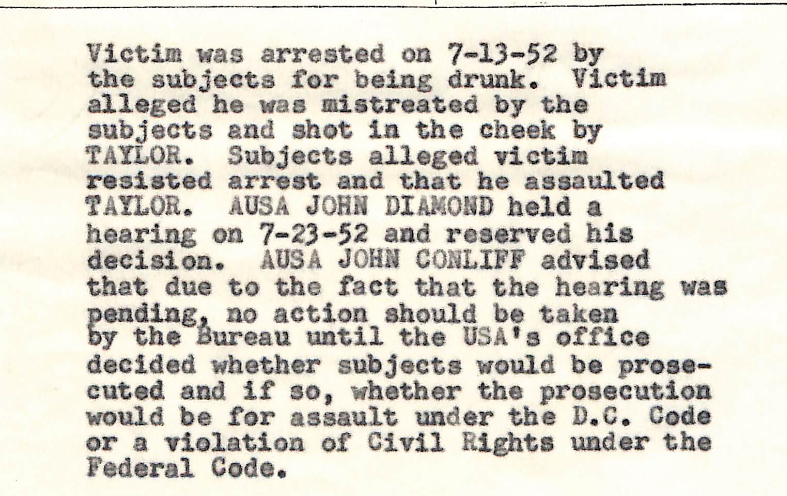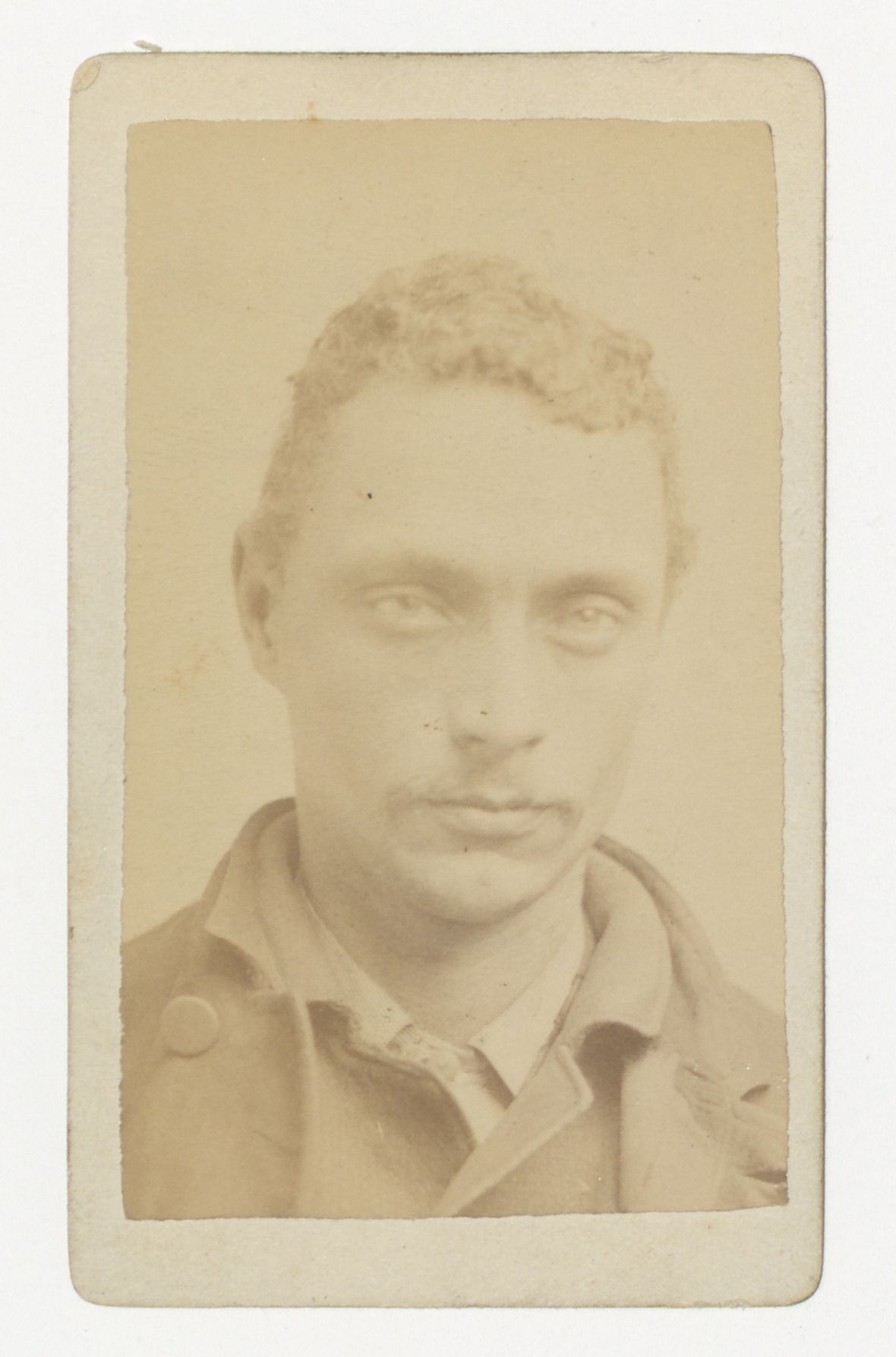There is a huge file from the Department of Justice about an incident that occurred around the 600 block of Rhode Island Avenue NW in the early 1950s.
The file we’ll be looking at is 144-16-95 [Frank Ray, Melvin Clements; Loran Lovan Taylor, Roland L. Gay – Victims] and you can look at this 240 page thing on the National Archives Catalog.
The investigation is mainly about a guy named Ezekiel “Zeke” Seigler, whose civil rights may have been violated when he was beaten by MPD. I’m going to spoil the ending. Nothing happens.
Seigler was an alcoholic who didn’t remember the beating. He made for a crap witness so therefore, nothing happened. But that’s not the interesting part. The interesting part is all the stuff brought forward from the investigation.
Despite it being a DOJ investigation, the FBI did the investigating and wrote up the reports. Zeke was arrested for being a drunk and was reportedly shot by Officer Taylor in the face.

Yes, I’m going to drag this one document through for a couple of months.

